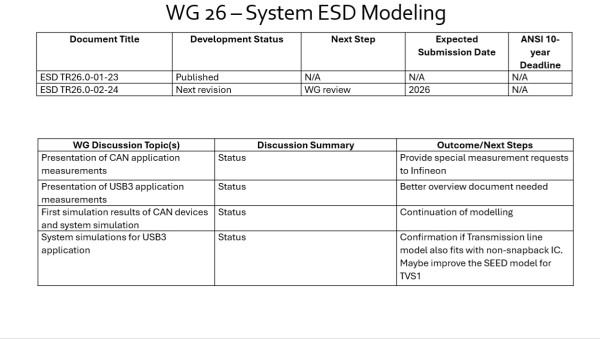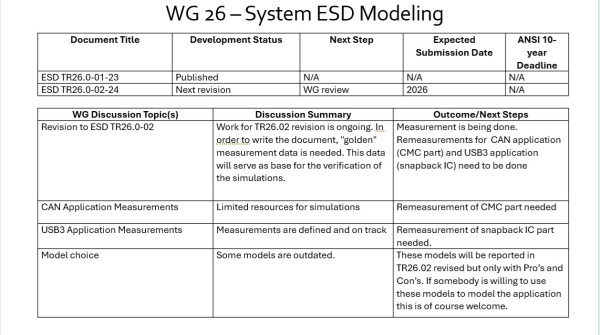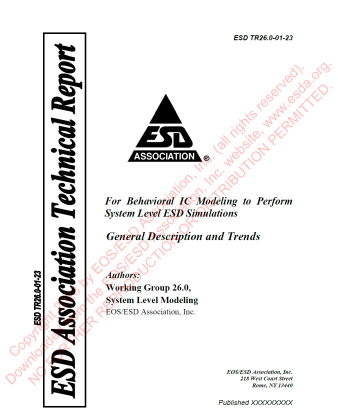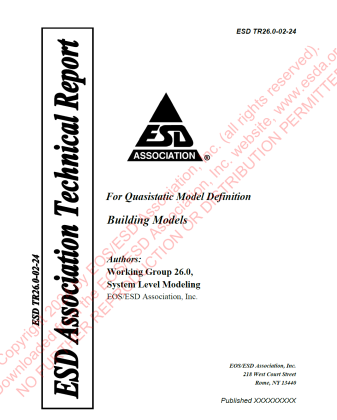WG 26.0 – System ESD Modeling
- Status:
- Active
- Working Group Chair:
- Steffen Holland, Nexperia
-

-

-
Summary of discussions/activities/document reviews during the most recent WG meeting.
- Presentation of measurements needed for TR26.02 revised
- CAN application: with and without Common Mode Choke
- Combination of IC with TVS is still missing
- USB3 application with a snapback IC à measurements are complete
- CAN application: with and without Common Mode Choke
- Presentation of measurements needed for TR26.02 revised
-
The tasks involve presenting the current measurement status of the CAN application for TR26.02 revised, along with the current measurement and simulation status of the USB3 application for TR26.02. Additionally, volunteers need to be recruited for various chapters of the revised TR26.02.
-
The WG discussed the status of the new technical reports being developed. A presentation on modeling of TVS protection device with two different approaches and comparison of system measurements and simulation results for CAN applications. There was another discussion on ways to speed up the progress by pooling some company funding to support TU Graz with measurement and simulation.
-
A presentation of CAN System Level measurements was given – an automatic routine for fitting parameters for SEED models was part of the presentation. The group discussed the next steps for SEED simulation. The final comments from TAS on ESD TR26.02 were discussed.
-
The WG reviewed comments on ESD TR26.0-01 and an update was provided on the status of ESD TR26.0-02. A presentation was given, and there was a discussion about the next steps for the WG.
-
The WG Chair updated the group on the status of ESD TR26.0-01 “System-Level Modeling”. The discussions then shifted to verification data creation methods. Other discussions revolved around how the ESD models can be verified.
-
WG focused on finals comments on the review of TR26.01 “System Level Modeling” prior to moving the document forward.
The draft for TR26.02 “For Quasi-Static Model Definition – Building Models” was also reviewed. Changes are to be made before the draft is sent to the entire working group for review.
-
The working group reviewed the status of ESD TR26-01. Quasistatic models will be included in the first revision and dynamic models will be added in the next revision. There is also a plan to add fail flags in models. The group also discussed the second technical report ESD TR26-02.
-
An update was given on a modular PCB approach for validation. The group finalized revisions to ESD TR26.0-01 and an update was given on ESD TR26.0-02.
-
A presentation was given on a quasi-static model to evaluate if the exchange format works. An update was given on a modular PCB approach for validation. The status of ESD TR26.0-01 and ESD TR26.0-02 was also reviewed.
-
Summary of meeting activities:
The group reviewed the status of current modeling and modular board approach for verification activities, as well as chose applications for the model application.

